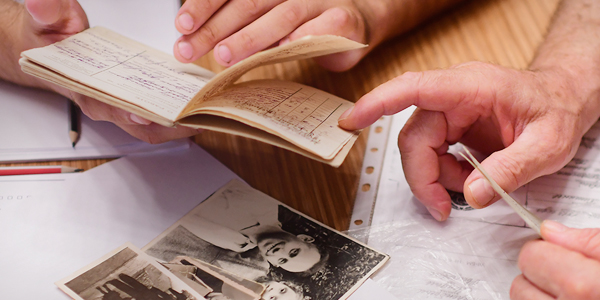Time there is not like it is here on earth… The inhabitants of this [other] planet had no names, they had no parents nor did they have children… They breathed according to different laws of nature, they did not live – nor did they die – according to the laws of this world. Their name was the number.”
Ka-Tzetnik (Yechiel Dinur)
Jews were made to work on farms, repair roads, clear forests and, especially, toil in industrial and armaments plants. Large concerns and private enterprises unhesitatingly exploited the labor of Jewish prisoners, who were beaten relentlessly by supervisors and were subjected to reduced and pilfered food rations by staff at all levels. Deprived of medicines and exposed to ceaseless brutality, more than half a million Jews died in the labor camps








